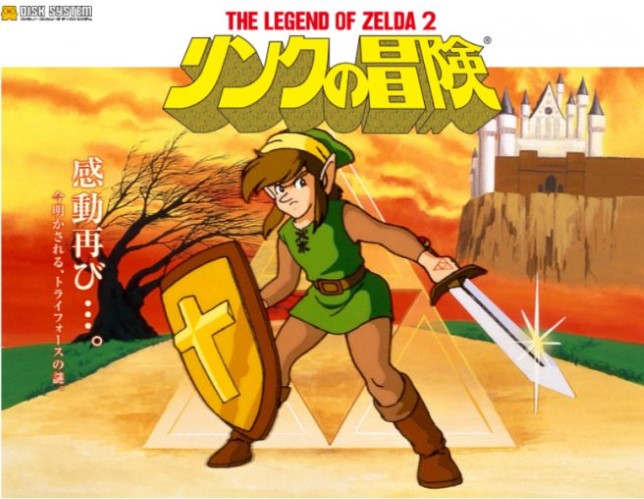Zelda II: The Adventure of Link
Zelda II: The adventure of Link is weird. But it’s not THAT weird.

The narrative of this game is that it’s a real dark horse, a blip in the continuity, a failure compared to the rest of the series. But I can’t help but disagree. It’s an experiment, sure, but it’s one that largely worked and has left an impact on the series right up until today.
Allow me to name the ways.
- Oh, the humanity!
- Use that sword, big boy!
Zelda 1 has great exploration, but the world is dead. What little humanity there is sits in dank caves, behind stone walls, meting out tiny blessings in the hope that a single person can fix the world.
Zelda 2, by comparison, feels vibrant and bustling. Yes there are monsters waiting to accost people on the roads but there are people, there are roads. The shift to a typical JRPG overworld necessitates numerous towns across a much larger world than the one we saw in Zelda 1 and with that comes a sense of scale that I’m not certain has been matched in the series until Wind Waker rolls around.
Zelda 1 captures the adventure of exploring the woods, Zelda 2 feels more like exploring an entire world. This feeling of being in an actual living world with multiple peoples and civilisations is one that starts here and sticks around to give us some of Zelda’s most memorable characters.
This game puts a way bigger focus on combat. It’s not perfect but it’s a lot better than where we left off in Zelda 1, a game whose combat is focused largely on attrition; barely scraping by and beating the odds of each dungeon gauntlet. Here, with the combat wholly divorced from the exploration, they’ve been able to design enemy encounters and a combat system that really works, despite its simplicity. With high and low stances allowing you to block enemy attacks and strike the shins of the defenseless before turning to leap over an oncoming fireball.
The combat in this game has two great legacies in the series. One is the iconic downthrust that Link receives a little ways into the game which feels just as good in this game as it does when it returns in Link’s Super Smash Bros. moveset. It also looms large in my mind as key pieces of the combat in Twilight Princess and The Wind Waker but I’m giving Zelda 2 all the credit as the first to feature the move.
The other thing that really stuck out to me is how closely the high-low-block-strike stances relate to the directional swinging of Skyward Sword, each system heavily reliant on reading the opponent’s own stance and reacting fast enough to nail them. In a series that doesn’t focus on precise, reactive combat in this way it’s hard not to see the genetic link between the two.
In all, I think this game really earns its place in Zelda canon, despite its reputation as the weird outlier. It’s a great game and anyone with a love of the series really owes it to themselves to give it a shot. That said, it IS an NES game so naturally that recommendation comes with a couple of caveats.
One, play with a guide. The quests and important upgrade locations are obscure in a way that doesn’t gel with most people’s modern sensibilities. Just grab a walkthrough!
Two, play with cheats. The combat, while interesting, is tough in the way that games just were back then. Depending on your emulator, you’ll be able to use gamegenie cheats to adjust the difficulty to your liking, I used code “SZKGKXVK” to give myself infinite lives so that I still had to complete each combat encounter but made respawns a lot more forgiving.
Zelda 2! It’s good and you should play it!